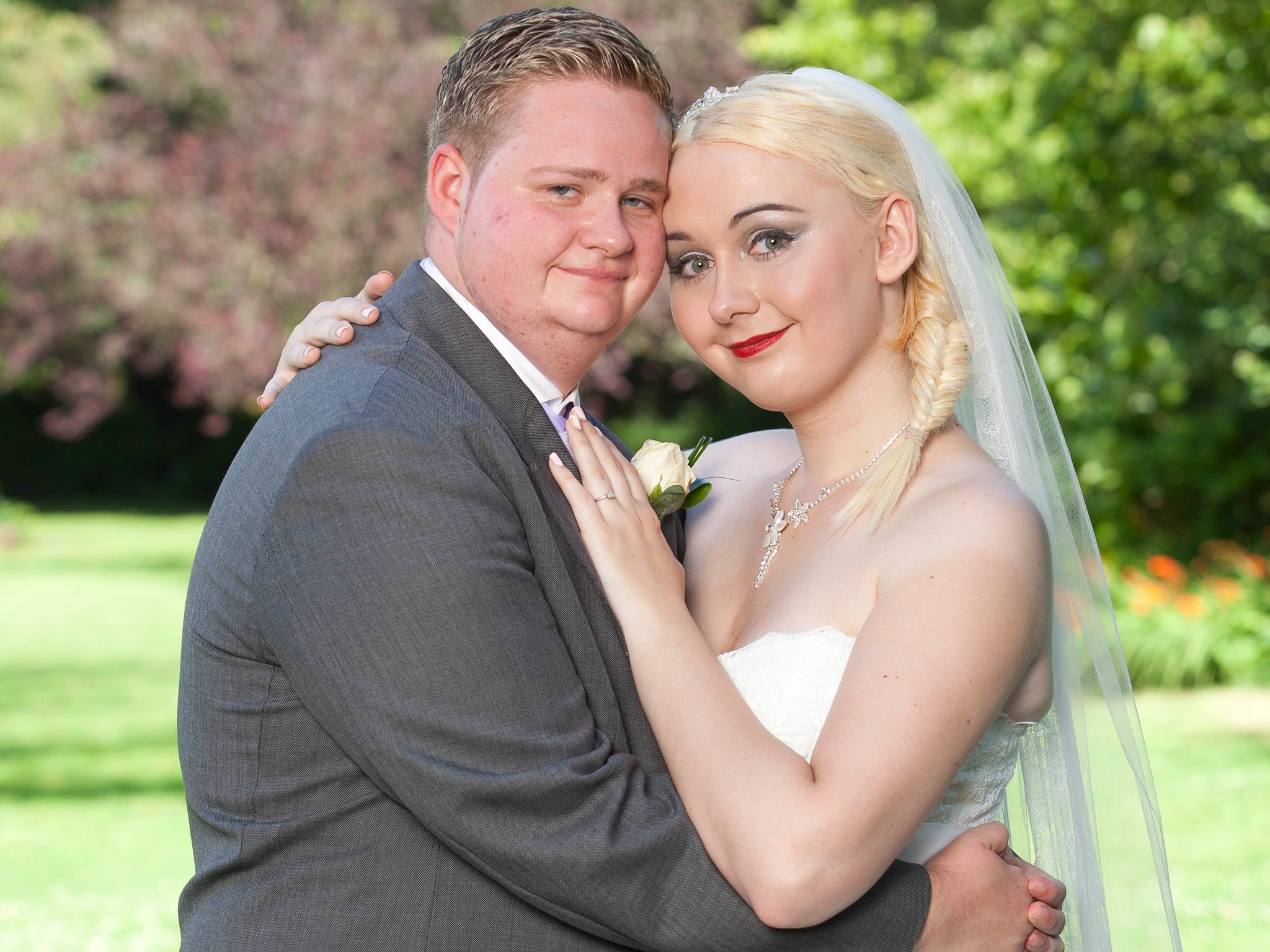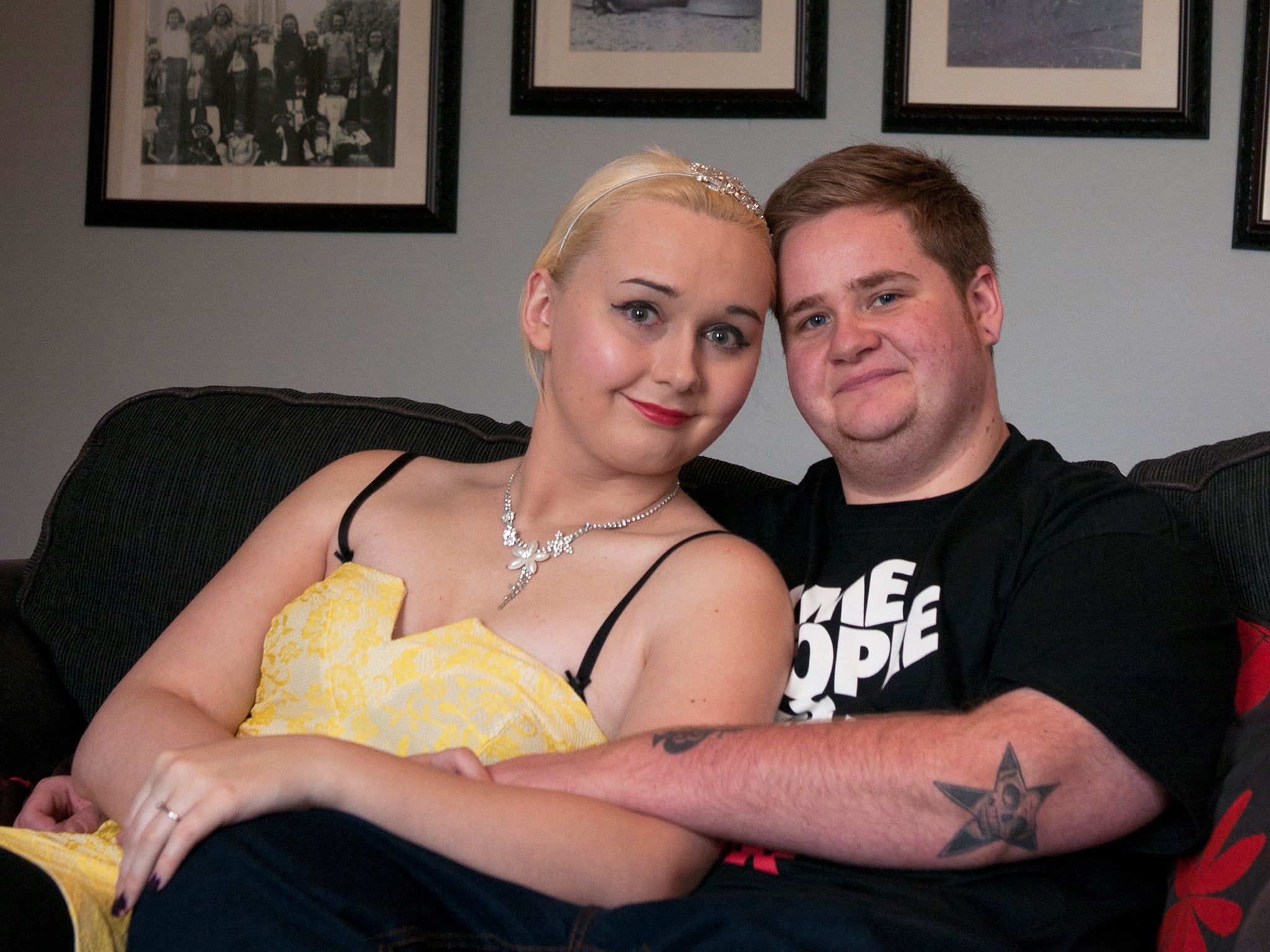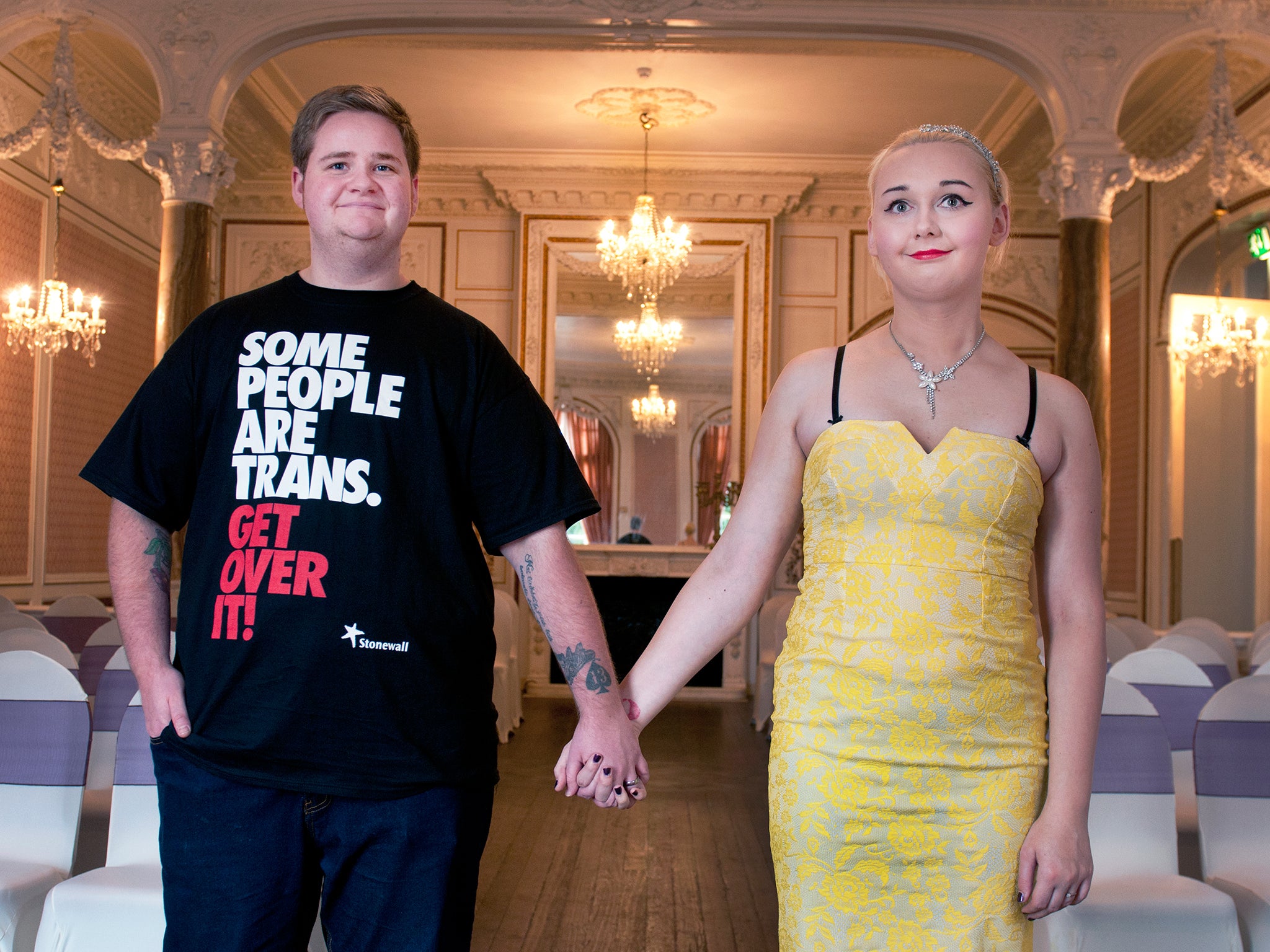Our gender swap wedding
When Jamie and Louis, both transsexual, decided to marry, they also chose to allow TV cameras to record the often rocky run-up to the big day. They tell Kate Hilpern why they did it

Your support helps us to tell the story
From reproductive rights to climate change to Big Tech, The Independent is on the ground when the story is developing. Whether it's investigating the financials of Elon Musk's pro-Trump PAC or producing our latest documentary, 'The A Word', which shines a light on the American women fighting for reproductive rights, we know how important it is to parse out the facts from the messaging.
At such a critical moment in US history, we need reporters on the ground. Your donation allows us to keep sending journalists to speak to both sides of the story.
The Independent is trusted by Americans across the entire political spectrum. And unlike many other quality news outlets, we choose not to lock Americans out of our reporting and analysis with paywalls. We believe quality journalism should be available to everyone, paid for by those who can afford it.
Your support makes all the difference.To the casual onlooker, the wedding of Jamie Eagle and Louis Davies was much like any other. There was a beautiful bride, heartfelt vows, speeches, cake and dancing. But this was no ordinary ceremony. The 21-year-old bride, Jamie, was born a boy and the 26-year-old groom, Louis, was born a girl. And given the pits of despair they have both endured (and still do) along their transgender journey, it was a day they often wondered would ever happen.
As if the lead-up to the wedding this summer wasn’t hard enough – with Louis having agonising breast removal surgery; Jamie facing hate crime for being transgender; and some wedding venues turning them away – the couple decided to have it all filmed. This week, the footage, including the culmination of the wedding day itself, will be aired in a documentary.
With the title Our Gender Swap Wedding, it would be easy to assume that the couple are yet another example of TV companies exploiting vulnerable people to make shock-tactics telly. But, they insist, nothing could be further from the truth and it’s true that the result – which is the first in Sky Living’s Forbidden Love series – is an educational, insightful and often moving window into the lives of two people who, for as long as they can remember, have felt they were living with the wrong body parts.
“We thought long and hard before agreeing to it, because life is difficult enough for us, without TV cameras encroaching into our daily lives and struggles,” admits Louis. “But in the end, that was our motive for going ahead. We want people to have a sense of what our lives are really like, so that when they talk about transgender issues, they are more informed.”

There are no holds barred in the show, with the couple discussing everything from their difficult childhoods (in her darkest moment as a teenager, Jamie tried to cut off her genitals, while Louis’ disgust at puberty made him resort to drugs and eventually an attempted suicide) to the dramatic physical changes that the hormone treatment has brought about (Jamie’s breast growth and softer skin, for instance, and Louis’ sprouting hair and increased libido). But with Louis doing the voice-over and a level of editorial control that included them deciding whether to keep in the scene of Louis baring his breasts to his consultant before their removal (they did), there’s a very strong sense of the couple telling their own story.
“I had to double-bind my breasts every day to hide them because they were big. It was horribly painful and yet equally horrible for me to have them not bound when I was at home with Jamie. I kept the scene in because I wanted people to grasp what that was like,” explains Louis.
Not that the surgery turned out to be the answer to everything, he admits. “On the one hand, it was momentous. I’ve had to jump through huge hoops to get a diagnosis, surgery and then funding for surgery. And it’s wonderful for my chest to look like how it should have been all along. But things didn’t go entirely as planned, which meant it was agony for a long time afterwards and we almost split up a couple of times due to the stress. In fact, we held off filming altogether for a couple of months while we focused on saving our relationship. Then, when were finally back on track, we got the bad news that we were missing a document to add to our birth certificates in order for me to marry as a man and Jamie as a woman.” The alternative (Jamie marrying as a man and Louis as a woman) was unthinkable for them and they almost called the wedding off altogether. “But then we decided a mere piece of paper shouldn’t stop us, so we went ahead with a humanist commitment ceremony and we’ll hand over the official documents to finalise it at a later date,” he says.
It’s not as if Louis and Jamie are new to media exposure. In fact, I first met the couple in the green room of ITV’s This Morning a couple of years back and it was only after a good hour of chatting to them that they told me their story – a story that I wrote for The Independent, while the couple also decided to do interviews with several tabloids.

Sadly, they paid a high price, with Jamie suffering so much verbal abuse from strangers in her community in Bridgend, Wales, that she needed anti-depressants. “But we still don’t regret it because so many others have told us how we’ve inspired them and I still get contacted for advice, including from parents of young children,” says Jamie, whose work in educating others on LGBT issues was how she first met Louis. “For me, the documentary felt like the next logical step,” says Jamie.
One of the most profound aspects of the programme is the insight into the couple’s families’ perspectives. While some of their siblings – including Louis’ sister, who says she always felt there was a masculine energy about him – are casual about the whole thing, their parents have clearly struggled. Indeed, while Jamie’s mother says she noticed Jamie was “totally different” from as young as six years old, her enduring use of the pronoun “he” hints at an ongoing internal battle. When she finally describes her daughter as “she” on her wedding day, you want to cheer.
Jamie was even more moved when, also on her wedding day, her dad said she looked beautiful. “It wasn’t filmed, but it was the first time he’d said it and it felt like he’d accepted me as a woman. It really moved me,” says Jamie.
Louis’ mother, who couldn’t be more supportive, is the most frank about the parental angst that she has suffered. “It’s difficult looking at photos because I gave birth to a daughter and gained a son,” she admits. “I grieved for a few years because I wanted Samantha back, but I have to realise what makes him happy.”
Neither Jamie nor Louis are at the end their respective journeys. Jamie’s gender reassignment surgery isn’t until next summer, after which it will be Louis’ turn. Once that’s over, they’d like to move somewhere new and start again – “somewhere we can be accepted like any other couple”.
But what the documentary reveals, and what strikes me when talking to them again, is that the wedding has given them something far more than any ordinary couple would get. You feel it the moment that Jamie steps into her wedding dress in the bridal shop. You feel it throughout their carefully and tenderly worded vows. And perhaps most of all, you feel it when their friends talk about how the wedding carried a very strong sense of all that Jamie and Louis have gone through to get there – individually, as a couple, in their families and in the outside world.
‘Forbidden Love: Our Gender Swap Wedding’ screens tomorrow at 10pm on Sky Living
Join our commenting forum
Join thought-provoking conversations, follow other Independent readers and see their replies
Comments